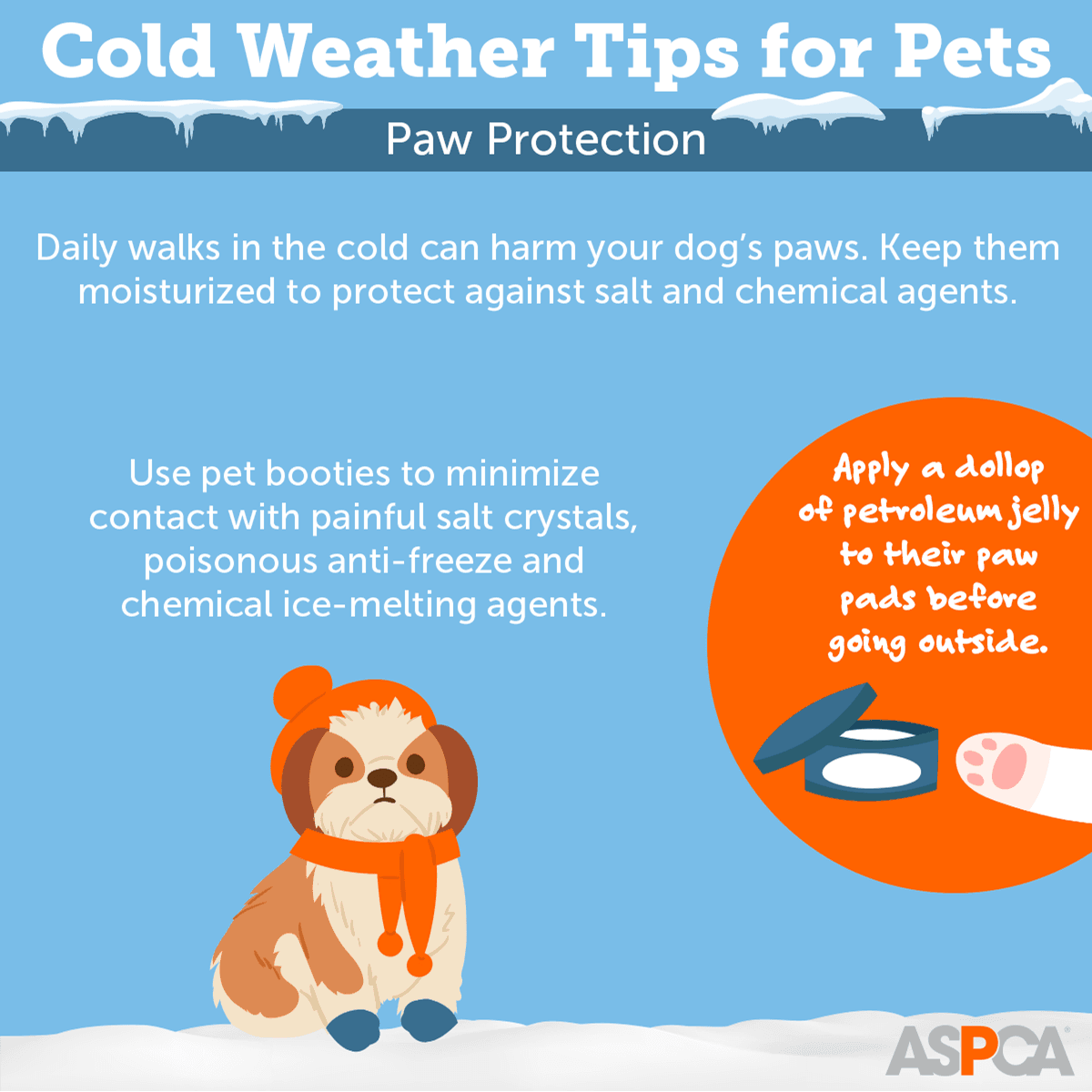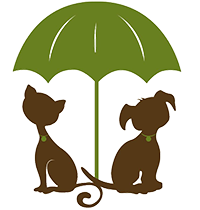
DON'T LEAVE YOUR PET OUT IN THE COLD
We prefer that pets live comfortably in the home with their people rather than outdoors year-round, but on extremely cold days or nights, it really is necessary! Minnesota winters are simply too harsh for even the most well-equipped breeds. Please follow these tips to help your pet remain safe, comfortable and happy:
Bring pets inside when the temperature is below freezing.
Dogs with well-insulated doghouses should be brought inside when the temperature drops below 5 degrees.
Hay can be used as an insulator. Do not use blankets as they can get wet and freeze.
Doghouses must be large enough to allow the dog to sit and lie down comfortable but small enough to hold in body heat. The floor should be raised off the ground and doorway should be covered with waterproof burlap or heavy plastic.
Doorways to doghouses should be facing away from the wind.
When outside, make sure your pet has the proper shelter and fresh water. Don't let their water freeze!
Staying warm in the winter requires extra calories, so adjust your pet's diet accordingly.
Thoroughly wipe off your dog's legs and stomach when they come in out of the rain, snow or ice. Salt, antifreeze or other chemicals could irritate their paws or harm your dog if ingested.
Animals like the sweet taste of antifreeze, and just a few sips can kill your pet. Store antifreeze containers away from pets and promptly clean up any spills. Seek medical help if you suspect your pet has ingested antifreeze.
Remember, if it is cold for you, it is cold for your pet! Some pets may even require a warm sweater for quick potty breaks or walks.
HOUSING
Most pets are happiest and healthiest when kept indoors with their owners. For pets that must be kept outside, proper shelter from inclement weather is essential. Doghouses should be big enough for dogs to stand, turn around, and lie down comfortably. With the correct size house, lined with clean, insulating straw or shavings, a dog's own body heat will keep the dwelling warm. If the house is too large, the heat dissipates quickly. It is also important to have the floor of the house raised enough to keep water runoff from entering. A canvas curtain or a drape over the opening can add extra protection. The power of winter wind chill should not be underestimated! Straw bales piled outside a doghouse or enclosure can buffer some of the wind's effects.
Dogs kept outdoors in the winter need a constant supply of clean, thawed drinking water. Adequate hydration aids in burning calories and producing heat. Owners should be urged to check regularly for ice formation in water bowls and to change the water as needed. plastic bowls should be used in the winter to keep a dog's tongue from freezing to a metal container. Winter calorie needs often increase for outdoor pets in order for thicker coat. Feeding times and quantities should be increased accordingly. Indoor dogs are usually less active and experience a drop in calorie requirements over the colder months.
GROOMING AND DRESSING FOR THE WEATHER
Outdoor dogs need to be kept well groomed to remain warm because a matted coat of fur loses its insulating ability. Dogs prone to hair growth between the footpads should have their foot hair trimmed regularly so snow and ice melt compounds do not collect around the toes.
Cold tolerance varies by breed and body condition: Shorthaired breeds may need a layer of fleece to deflect the chill. Owners should be reminded that very young and senior pets, those with preexisting medical conditions, and brachycephalic breeds are more susceptible to cold temperatures.
HYPOTHERMIA AND FROSTBITE
Animals that are left outdoors in freezing temperatures with inadequate protection are prone to hypothermia (low body temperature) and frostbite. Some signs of hypothermia that owners can look for include shivering, slow and shallow respirations, and mental dullness. If hypothermia is suspected, owners should be instructed to bring the pet to the clinic immediately. If the owner does try to warm the animal (with blankets, a heater, etc.), it is essential that only the pet's abdomen and thorax are warmed; warming extremities first can cause the animal to go into shock. Frostbite occurs most commonly on paws, ears, and tails. Affected body parts are unlikely to have sensation until thawing begins. They become red, swollen, and very painful. Treating hypothermia or frostbite requires prompt attention from veterinary professionals.
ICE MELTS
Most pets become exposed when they groom the compounds off their feet and fur. Salivation and mild gastrointestinal signs often ensue. Most problems can be prevented by wiping a pet's feet with a damp towel or bathing a pet soon after it has walked or rolled in areas with ice melt. Using sand or cat litter to help with traction in icy spots is a safe option. If pets must walk over ice melt compounds, paws can be pretreated with a thin layer of nonstick cooking spray to prevent adherence of the compounds. Booties can also help if pets tolerate them.
ANTIFREEZE
Ethylene glycol is found most commonly in greenish colored antifreeze chemicals used in motor vehicles, but it is also in rust removers, film-processing solutions, and some solvents. Because of its sweet taste, even a small radiator leak of fluid can attract animals. A single lick can be deadly! Keep advised chemicals well sealed and out of reach. If ingestion is suspected, prompt veterinary intervention increases the chances of a favorable outcome.








